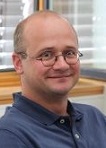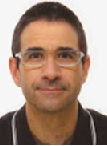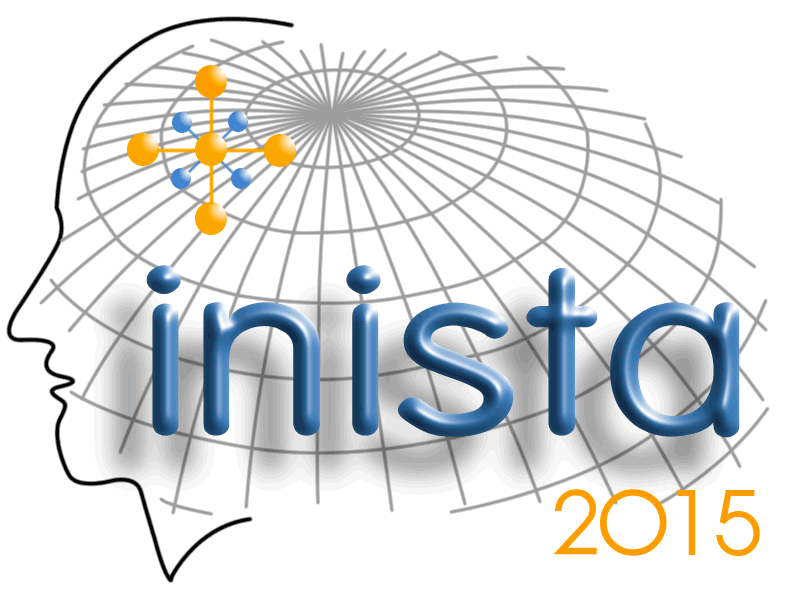Tutorials
 |
 |
How to successfully apply Genetic Algorithms in practice: Representation and Parametrization
Dr. Alexander Asteroth, Computer Science Department, Bonn-Rhein-Sieg University, Germany Alexander Hagg, Computer Science Department, Bonn-Rhein-Sieg University, Germany |
Evolutionary computation and genetic algorithms (GA) in particular have in been applied very successfully to many real world application problems. However the success or failure of applying Genetic Algorithms highly depends on how a problem is represented. Additionally the number of free parameters makes applying these methods a science of its own which presents a huge barrier to beginners in this area. This course will give a brief summary on various representations, discuss parametrization and their influence on the dynamics of GA solvers, the last being the main topic of the course. The tutorial will be complemented with a practical exercise that can be solved overnight and will serve as basis in the second half of the tutorial, where we will discuss good and bad choices for parameters and representation.
Prerequisites: background in programming (Python will be used)
Target audience: Students with only basic experience in GA
Alexander Asteroth
Alexander Asteroth is a full professor at Bonn-Rhein-Sieg University of Applied Sciences (since 2010). He studied computer science and mathematics at University of Bonn where he received a PhD degree in computer science (2000) and a master's degree (Diplom) in 1995. His PhD-work on parameter identification using meta modeling techniques for an application in space medicine was funded by Wernher von Braun-Stiftung zu Förderung der Weltraumwissenschaften. He worked for German National Research Center for Computer Science GMD and in cooperative projects with the National Aeronautics and Space Research Centre DLR. His main focus of research is machine learning applications, in particular optimization using neural networks and evolutionary algorithms. Fields of application include robotics, physiological modeling and most recently efficient mobility.
Alexander Hagg
Alexander Hagg is currently in the final stage of his MSc degree in the Autonomous Systems programme at Bonn-Rhein-Sieg University of Applied Sciences in Sankt Augustin, Germany. His current work on metamodeling for subsonic aerodynamic shape optimization will be continued in his PhD Thesis. He received his BSc in computer science (2012) and worked for the Fraunhofer IAIS Institute in the area of computer vision and robotics. His main research interests are related to computer vision, robotics, machine learning, genetic algorithms and genetic programming. He is currently involved in projects concerning robotics, efficient mobility, aerodynamic visual analysis and metamodeling, and full vehicle body 3D scanning.
 |
A Tutorial on Manifold Clustering using Genetic Algorithms
Dr. Héctor D. Menéndez, Computer Science Department, University College London, UK |
Automatic Manifold identification is currently a challenging problem in Machine Learning. This process consists on separating a dataset blindly, according to the form defined by the data instances in the space. Data are discriminated in groups defined by their form. These approaches are usually focused on continuity-based methods where the manifold follows a continuity criterion. Currently, clustering techniques try to deal with the discrimination process, but there are a few algorithms that can generate an accurate and robust discrimination. This tutorial aims to present new different approaches, specially focused on Genetic Algorithms, which can deal with these problems.
Héctor D. Menéndez is Research Associate at University College London (UCL). He received his Ph.D. in Computer Science (2014) from Universidad Autónoma de Madrid, a BSc in Computer Science from Universidad Autónoma de Madrid (2010), a BSc in Mathematics from Universidad Autónoma de Madrid (2010), a MSc in Computer Science from Universidad Autónoma de Madrid (2012) and a MSc in Mathematics from Universidad Autónoma de Madrid (2013). Nowadays, He is involved with Software Systems Engineering Group (SSEG) at Department of Computer Science of UCL. His main research interests are related to Malware Detection, Clustering, Graph-based algorithms, Genetic Algorithms, Ant Colony Optimization, Social Data Analysis, Text Mining, Profile Extraction and Prediction Models.
 |
Sensor Fusion Engineering. Introduction, techniques and applications
Dr. Jesús García, Compuer Science Department, Universidad Carlos III de Madrid, Spain |
The objective of seminar is introducing sensor fusion techniques and system design problems, illustrated with representative examples: air traffic monitoring and trajectroy analysis, contextualized and coordinated surveillance networks.
System-level design of a data fusion process involves many detailed technical problems: source characterization, common referencing of data streams sources, association to objects in the scene, state estimation, situation understanding, etc. Data fusion technologies including detection (or decision) theory, estimation theory, and parametric and non-parametric algorithm solutions are required.
As presented here, the classical approaches can be extended or complemented with some Computational Intelligence techniques used to improve adaptability and robustness of solutions: optimization, coordination, knowledge representation, machine learning, etc. This is applicable in domains requiring a high degree of customized sensor fusion and demanding robust solutions for operational conditions, combining the use of classical fusion techniques with higher level criteria to drive the system behaviour.
The talk will illustrate experiences in specific sensor fusion projects and the applied techniques: sensor fusion and intelligent systems in air traffic control (ATC) systems, and surveillance networks in the airport surface domain.
Jesus Garcia Herrero is Associate Professor at the Universidad Carlos III de Madrid, Computer Science Department. He received his M.Sc. and PhD in Telecommunications Engineering from Universidad Politecnica de Madrid. His main research interests are computational intelligence, sensor and information fusion, surveillance systems, machine vision, air traffic management and autonomous systems. Within these areas, including theoretical and applied aspects, he has co-authored more than 10 book chapters, 50 journal papers and 120 conference papers.
He has served on several advisory and programming committees in organizations such as IEEE (senior member), ISIF and NATO. He is the chair of the Spanish IEEEE Chapter on Aerospace and Electronic Systems since 2013 and appointed Spanish member of several NATO-STO Research Groups. He was executive cochair for the 17th International Conference con Information Fusion and belongs to the board of directors of International Society of Information Fusion since 2014.
 |
Ant Colony Optimization Models in Constraint Satisfaction-based Applications
Dr. Antonio Gonzalez. Basque Center for Applied Mathematics-TECNALIA, Spain |
Nowadays, there is a huge number of applications that can be modelled, and solve, as a Constraint Satisfaction Problem (CSP). CSP belongs to this kind of traditional NP-hard problems with a high impact in both, research and industrial domains. The goal of these problems is to find an assignation for the set of variables in such a way a set of restrictions can be satisfied. This kind of NP-hard problems needs from a huge number of computational resources even for simple problems. For this reason, different heuristic methods has been studied to find feasible solutions in this domain. This tutorial will explain the different existing Ant Colony Optimization Models for solving CSP-based applications.
Antonio González Pardo is a Post-Doctoral researcher at BCAM-TECNALIA. He received a Ph.D. in Computer Science (2014) from Universidad Autónoma de Madrid, a BSc in Computer Science from Universidad Carlos III de Madrid (2009) and a MSc in Computer Science from Universidad Autónoma de Madrid (2011). Currently he is a post-doctoral researcher in a join position offered by Basque Center for Applied Mathematics (where he belongs to the Machine Learning group) and also by TECNALIA (where he participates with the Optima group). His main research interests are related to computational intelligence (genetic algorithms, PSO, SWARM intelligence...etc), Multi-Agent Systems and Machine Learning Techniques. The application domains for his research are Constraint Satisfaction Problems (CSP), Complex Graph-based problems, Optimization problems and Video Games.
Call for Tutorial Proposals
For tutorial proposals contact:
Dr. Banu Diri
Department of Computer Science
Yıldız Teknik Üniversitesi
Davutpaşa Kampüsü
34349 Beşiktaş/Istanbul, Turkey
Email: diri@ce.yildiz.edu.tr
Dr. José A. Portilla Figueras
Department of Signal Theory and Communications
Universidad de Alcalá
Ctra. Madrid-Barcelona, Km. 33,600
28871 Alcalá de Henares, Spain
Email: antonio.portilla@uah.es
Dr. Paulo Novais
Department of Computer Science
Universidad de Minho
Campus of Gualtar
4710-057 Braga, Portugal
Email: pjon@di.uminho.pt



